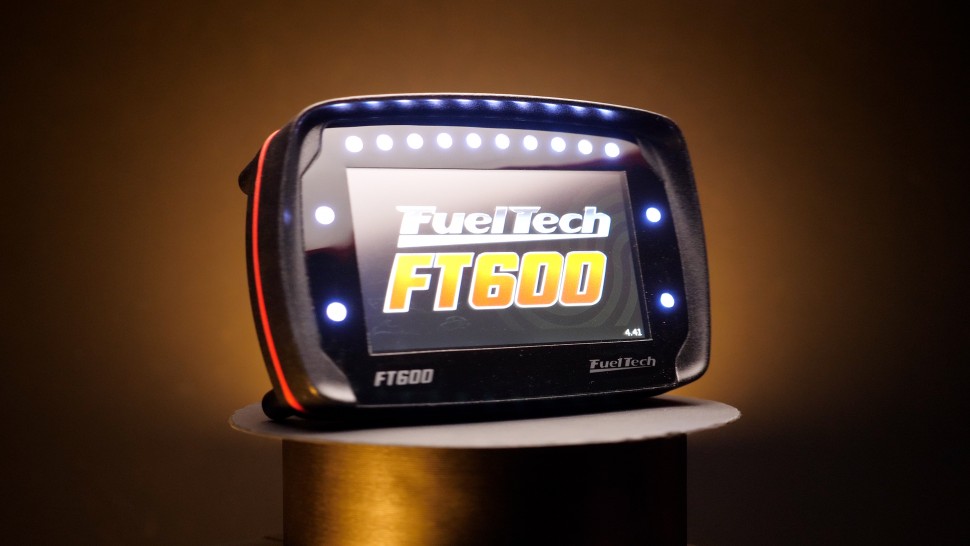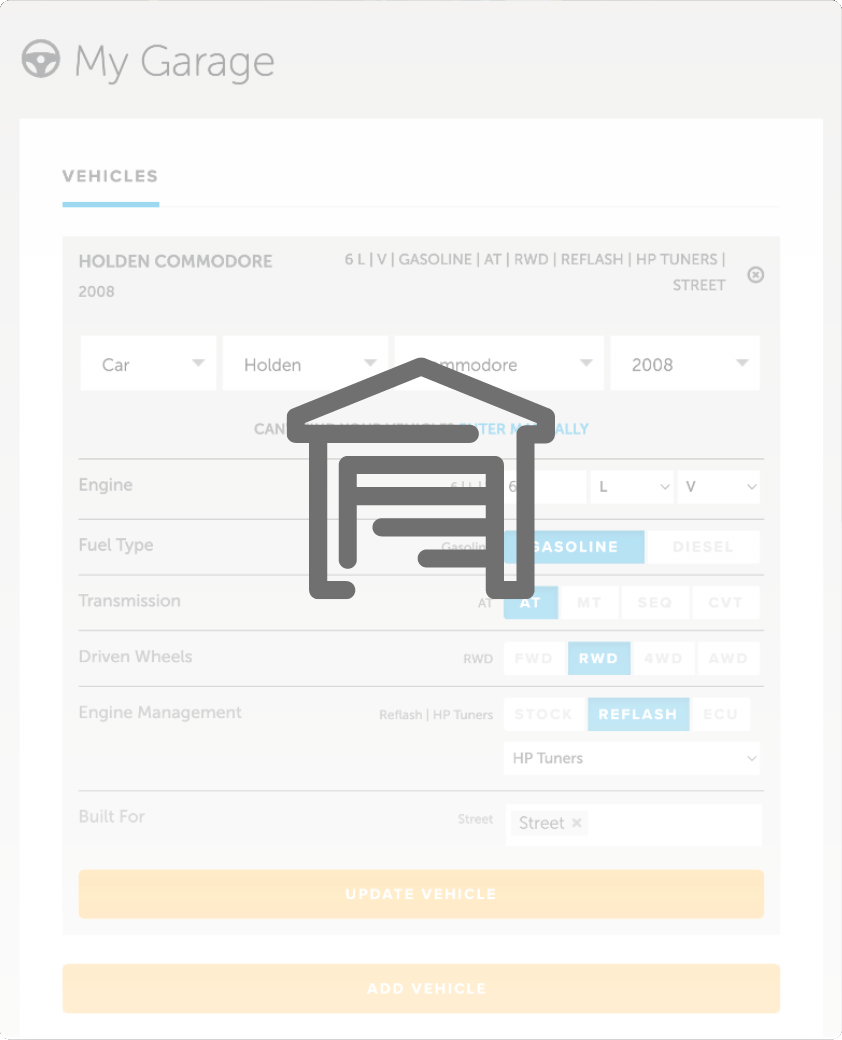| 00:00 |
We finish the ECU setup module by selecting Transmission Type, Operating System, and Communication with the TCM, if necessary.
|
| 00:08 |
Next, we want to do the same on the TCM side.
|
| 00:12 |
Start by connecting the TCM and saving the current file.
|
| 00:15 |
If you aren't absolutely certain the TCM is unaltered from stock, try to find a known stock file for your exact vehicle.
|
| 00:24 |
While the vehicle may have an aftermarket tune on it that's working well, I still suggest comparing to stock.
|
| 00:31 |
That way you can review all changes made and make sure they're truly appropriate for the current vehicle configuration and your tuning goals.
|
| 00:40 |
If you're working with a standalone system that doesn't have a base file for your transmission, now is the time to set up which solenoids engage each gear and other critical transmission input and output configuration.
|
| 00:53 |
As I mentioned earlier in the course, the factory service manual is a great source of information to ensure these base settings are correct.
|
| 01:03 |
If this is a reflash setup on a vehicle without an engine or transmission swap, generally no setup changes of that kind are required, but Transmission Type, Vehicle Platform, and even Shifter Type are selectable in some cases and may need to be adjusted if components have been swapped out or if you're using a standalone TCM rather than reflashing a stock one.
|
| 01:25 |
If the vehicle has a transmission swap, we need to confirm the transmission, wiring, and control system are compatible and select the transmission type accordingly.
|
| 01:36 |
This may be as easy as selecting from a list or a pull-down menu or may require patching of a file.
|
| 01:44 |
Certain options may or may not be available depending on your specific application.
|
| 01:48 |
Next, just as we may have set up torque limits in the ECU tune, they're often tunable on the TCM side as well.
|
| 01:55 |
This is something you'll generally find when reflashing a modern OEM TCM or tuning a higher-end standalone TCM.
|
| 02:02 |
Some simplified standalone TCM options and older reflash options may not have torque limits as part of the control strategy.
|
| 02:10 |
If torque limits can be set, I suggest starting with stock or conservative values based on your understanding of what the components can handle, unless you're certain your entire drivetrain can handle more.
|
| 02:25 |
Remember, you can always increase limits later if you want to start safe.
|
| 02:31 |
As I mentioned earlier in the course, before altering limits, I suggest looking at the stock values.
|
| 02:37 |
Some of these may be set so high they'll never do anything.
|
| 02:42 |
And depending on our needs and our use case, that might be ideal.
|
| 02:46 |
Or we might actually want to make that limit come into play.
|
| 02:51 |
As we look at the various torque limits in the TCM tune, also keep in mind they may not all be based on direct input from the engine.
|
| 03:00 |
Transmission input torque is usually straightforward, but transmission output torque incorporates torque multiplication based on transmission gear ratios.
|
| 03:09 |
Let's run over some examples of torque limits we might find, starting with input torque.
|
| 03:15 |
This is the torque as it's provided from the engine to the transmission.
|
| 03:19 |
While we generally set this similarly to an ECU torque limit, in testing we may find we like the limiting behavior initiated by the ECU or the TCM better.
|
| 03:31 |
With that knowledge in hand, we can set this limit so either the ECU side or the TCM side has a lower value, making it more likely to engage than the other.
|
| 03:43 |
Next, we have torque converter limits.
|
| 03:46 |
In some applications, the maximum torque allowed at the converter is different depending on whether the converter is locked or not.
|
| 03:55 |
In some cases, the locked value will be higher.
|
| 03:58 |
In others, the unlocked value will be higher.
|
| 04:00 |
It really depends on the application and the capacity of the lock-up clutch.
|
| 04:06 |
Next, some TCMs have gear-based torque limits.
|
| 04:09 |
They help account for the difference in axle torque generated in different gear ratios.
|
| 04:14 |
In drive chain systems where axles are the weak link, this can allow us to prevent exceeding axle capacity in low gears which have greater torque multiplication.
|
| 04:25 |
While reviewing gear-based torque values in the TCM, we should always check if the software we're working with is displaying engine torque values, transmission output torque values, or in some cases axle torque values, and then proceed accordingly.
|
| 04:41 |
If the values are at the engine, keep in mind equivalent limit values for two different gears will result in similar torque at the engine but different torque exiting the transmission and being applied to our drivetrain.
|
| 04:56 |
It's also important to remember the torque multiplication impact of gearing.
|
| 05:01 |
For example, a 1.5 to 1 gear ratio and a 1 to 1 gear ratio apply drastically different transmission output torque, with the 1.5 to 1 ratio causing 50% more output torque.
|
| 05:15 |
If a limit is labeled transmission output torque, that clarifies things, and we know it's not engine torque based.
|
| 05:23 |
But for example, are we dealing with a pre - or post-transfer case torque value? Always read the documentation in your chosen software.
|
| 05:33 |
Next on the to-do list are speed-based limits.
|
| 05:36 |
Most often you'll find limits to control acceleration at low speed and as the vehicle approaches top speed limits, both of which we may want to alter for racing purposes.
|
| 05:46 |
Moving on, some TCMs have separate abuse modes which target brake torquing, wheel hop, or axle tramp.
|
| 05:54 |
Brake torquing refers to applying the accelerator while holding the vehicle stationary with the brakes and may prevent a static burnout.
|
| 06:02 |
If you want to brake torque more aggressively than factory settings allow, adjustment can be made here.
|
| 06:08 |
Wheel hop or axle tramp modes generally impact low speed acceleration in first gear, and in some cases, in the lowest few gears.
|
| 06:17 |
While the purpose is to reduce the likelihood of braking an axle from wheel hop or axle tramp as the tires struggle for grip, it can slow acceleration, so racers often decide to risk it and disable these.
|
| 06:31 |
Next you may find torque rate of change limits.
|
| 06:34 |
These limits impact how fast we can increase torque output.
|
| 06:37 |
The idea is to prevent shock loading components and make the vehicle more predictable.
|
| 06:43 |
Much like the abuse modes, this is something you may want to reduce the impact of or disable completely if the vehicle is being used in a purely race environment and you feel it can handle more rapid torque increases.
|
| 06:57 |
Moving along, we have temperature limits.
|
| 07:00 |
These tend to reduce maximum torque output while the transmission is very cold or very hot.
|
| 07:05 |
If we don't have a compelling reason to adjust this, they may be best left alone.
|
| 07:10 |
If we do want to adjust it though, it's important to consider the temperature range our transmission fluid can handle.
|
| 07:17 |
We also want to keep in mind that this is our catch-all for the whole drivetrain, so if we know by the time the transmission hits 250 degrees F, our rear differential is 300 plus degrees and overheating, we can use the transmission limit to help protect our differential.
|
| 07:34 |
I've mentioned several limits and some systems may have even more.
|
| 07:38 |
As someone who has spent a great deal of time cramped in vehicles with a laptop, my suggestion is to handle all this initial setup work in a comfy spot before getting in the vehicle.
|
| 07:50 |
In addition to torque limits, we may find temperature and vehicle speed based limits, which do more than just reduce torque.
|
| 07:57 |
They may employ separate control strategies to protect components from damage due to overheating or failure due to exceeding the speed limit of the tires, driveshaft, or other components.
|
| 08:10 |
If you prefer one over another, set the one you like so it will engage first.
|
| 08:16 |
You can always come back and adjust limits more later, but now you've looked them over, understood what they're going to do, adjusted some if you're confident you want a specific change, and most importantly, now you know what to expect as you get further into tuning the transmission.
|
| 08:32 |
Next, set gear size and tire sizes.
|
| 08:35 |
It's critical to get this right now because it has a huge impact on shift scheduling.
|
| 08:40 |
If the vehicle is mechanically stock and you're working with a reflash based system and a known good stock file, you can generally count on the values being correct.
|
| 08:49 |
If, however, you're working with a standalone transmission controller, it's more likely you'll need to enter these values yourself.
|
| 08:56 |
Reflash or standalone, if the transmission is aftermarket or a rebuilt factory unit, confirming transmission specs with a builder is recommended to ensure you have the right gear ratios.
|
| 09:08 |
If an external gear reduction has been added, that needs to be accounted for.
|
| 09:12 |
If there isn't a place in the tuning software labeled for it specifically, this can sometimes be combined with an axle ratio since it occurs post -transmission, pre-hub and wheel speed.
|
| 09:23 |
Back to more common situations, it's time to confirm diff ratios.
|
| 09:28 |
While people often have stock transmission gearing, rear axle ratios are commonly changed and I've found people often either don't remember or aren't sure what they have.
|
| 09:39 |
If you get into tuning and realize something isn't quite right based on vehicle speed being way off, axle ratio may be a good place to start your hunt for data which isn't correct.
|
| 09:50 |
I went through some ways to determine diff ratios in the previous section of this course, so you can always go back to that for a refresher.
|
| 09:58 |
Next, confirm tire size.
|
| 09:59 |
If they're stock and you're reflash tuning from a known stock tune, you can skip this step.
|
| 10:04 |
If not, you can follow the process I laid out in the prior section to measure real -world tire size.
|
| 10:11 |
I explained how to get circumference and you can divide by pi if diameter is needed.
|
| 10:16 |
If instead you're asked for tire height, don't worry, it's the same as tire diameter.
|
| 10:22 |
However the TCM software has you enter tire size, it's important to remember size varies with vehicle load and with tire pressure, which varies with external factors like ambient temperature, track temperature, vehicle load, heat transfer from brakes via the wheels and more.
|
| 10:39 |
Also remember that on the dyno, you may be using significantly different tire pressures than usual or different wheels and tires than what you race on.
|
| 10:48 |
If they're not all exactly the same size, you will see changes in readings and behavior.
|
| 10:54 |
As with all data entries, be careful and check units and convert as needed.
|
| 10:58 |
You may be measuring in centimeters, but data may need to be entered in meters, inches or another unit of measure.
|
| 11:05 |
At this point in the process, it's time to store changes and confirm we have no error codes on the ECU or TCM.
|
| 11:13 |
If we do have errors, stopping to diagnose them now is best, especially if they weren't present prior to updating the TCM with a new tire size, gear ratio or other settings.
|
| 11:26 |
To store changes, the process will vary depending on the TCM and software you're working with.
|
| 11:31 |
But generally speaking, reflash-based systems will require being in a key-on, engine-off state to read or write changes to the TCM.
|
| 11:39 |
With standalone systems, oftentimes changes can be made on the fly while the vehicle is running or driving, but it's safer to do so without the engine running just in case a mistake is made.
|
| 11:51 |
Also, real-time changes may not persist after a key cycle, so check if you need to perform a store process so updates aren't lost when you turn the ignition off.
|
| 12:02 |
With no codes present, you can casually get the vehicle up to a steady speed to verify whether the TCM monitored vehicle speed matches the speed the vehicle is actually traveling.
|
| 12:14 |
If all the gearing and tire size info is correctly entered, the TCM monitored vehicle speed should be correct.
|
| 12:22 |
If the ECU tune isn't complete at this point, now is a good time to continue on the ECU side until you can perform the vehicle speed test safely.
|
| 12:32 |
There are a few common ways to test the accuracy of our TCM's vehicle speed calculation.
|
| 12:38 |
First, you can drive the vehicle on a roller dyno, which has a properly calibrated speed reference.
|
| 12:44 |
Alternatively, you can drive at steady state speed, on or off-road, while referencing an accurate GPS speed, which can be measured using any number of free apps for Apple or Android phones.
|
| 12:56 |
If neither of those are going to work, you can have a friend ride along and time driving a measured mile, kilometer, or other known distance.
|
| 13:05 |
Based on the time to cover that distance, you can determine what speed you were actually traveling.
|
| 13:11 |
For example, perhaps we drive at a TCM monitored speed of 60 miles an hour, for a distance of 1 mile indicated by trusted road signs, and it takes us 1 minute as timed on a stopwatch.
|
| 13:26 |
To convert your timed mile into a traditional speed, you would do the following.
|
| 13:30 |
Take 60 minutes in an hour, and divide it by your time to cover 1 mile of 1 minute.
|
| 13:37 |
60 minutes divided by 1 minute per mile equals 60 miles per hour.
|
| 13:42 |
If instead it took us 1.1 minutes to drive 1 mile, then instead you would do 60 minutes divided by 1.1 minutes per mile equals 54.54 miles per hour.
|
| 13:57 |
In that case, the vehicle's true speed is slower than the 60 miles per hour the TCM indicated.
|
| 14:04 |
If you divide the actual speed of 54.54 miles per hour by the TCM monitored speed of 60 miles per hour, you get 0.909, meaning we're only going about 0.9 or 90% of the speed our speedometer is reporting.
|
| 14:22 |
Once we know how much speed error we have, we can decide how accurate we want it to be.
|
| 14:28 |
Keep in mind, anything more than a percent or two can complicate the rest of the tuning process.
|
| 14:34 |
As we try to correct the error, it's important to find the root cause of the speed error, despite the temptation to fudge tire size or final drive until monitored speed matches reality.
|
| 14:45 |
Altering the wrong item to make vehicle speed match can actually create more issues.
|
| 14:51 |
I know I'm being a bit tough on this point, but I promise it's worth it to save you confusion and wasted time down the road.
|
| 14:59 |
I've mentioned gear ratios, final drive, and tire size, and if there's a speed sensor in the transmission, make sure the tooth or pulse count is correct as well.
|
| 15:09 |
Once you have speed reading accurately at 60 miles per hour by entering all the associated data correctly, check at 30 miles per hour and see if speed is still reporting correctly.
|
| 15:20 |
If you're one mile per hour off, that's not worth worrying about.
|
| 15:24 |
If you're on a dyno with a car that can safely go a lot quicker than 60 miles per hour, it's worth checking it briefly at 90 or 100 miles per hour.
|
| 15:34 |
That way you get more confidence that the speed reading is correct over a full range of operation.
|
| 15:40 |
If the vehicle you're working on uses multiple sets of wheels and tires with significantly different tire diameters, or multiple final drives that are swapped out regularly, I like to save separate calibrations which are clearly labeled for each combination.
|
| 15:57 |
Without keeping the calibration and vehicle configuration matching, you won't just have incorrect vehicle speed.
|
| 16:04 |
All your speed-based shift points will be incorrect.
|
| 16:08 |
An example of a big tire size change would be swapping between 26 and 28 inch drag slicks at the track.
|
| 16:15 |
Another would be driving to the track on 29 inch street tires and then swapping to 27 inch road race tires in the pit.
|
| 16:23 |
It's also worth keeping in mind that if our system uses RPM-based wide open throttle shift points, changing tire size alters the vehicle speed and position on track where the shifts will occur.
|
| 16:36 |
For example, perhaps we want a drag car to shift at 7,000 RPM, but we've just shortened the rear diff or rear tire.
|
| 16:43 |
With the shorter effective gearing, now if we shift into fourth gear at 7,000 RPM, it will be happening 100 feet before the finish line.
|
| 16:54 |
Perhaps even if horsepower falls off a little, allowing the engine to rev to 7 ,200 RPM in third gear and avoiding the shift is the more efficient way down the track and still within engine safety limits.
|
| 17:08 |
That covers everything we need to know about initial TCM setup.
|
| 17:12 |
So let's do a quick review of the main points before moving on to the next step.
|
| 17:17 |
If our TCM supports multiple transmissions, shifter types, gear ratios, operating systems, communication settings, or ECUs, start by setting each function accordingly or confirming you have good stock data that already matches your vehicle.
|
| 17:34 |
TCM torque limits come in various forms.
|
| 17:37 |
Check units to understand each setting better before altering it.
|
| 17:41 |
We also need to verify if the torque value we're setting is being input as an engine torque value, transmission output torque value, or otherwise, and then make our adjustments accordingly.
|
| 17:54 |
If you're working with a TCM tune someone else has altered, compare it to stock values if possible.
|
| 18:00 |
Make sure any changes from stock are necessary and correct.
|
| 18:06 |
Some limiters are set high enough to have no impact in stock form.
|
| 18:10 |
If that particular limit isn't of use to you, there's no need to alter it.
|
| 18:15 |
Where we decide to increase torque limits, remember that the limiters set the lowest will be engaged first as torque rises beyond desired levels.
|
| 18:24 |
Confirming tire size and final drive, speed sensor pulse count, and entering them correctly the first time will save us from many headaches down the road.
|
| 18:33 |
If you've forgotten how to check, refer back to the tire size and final drive calculations module in the previous section of the course.
|
| 18:42 |
Just like an ECU, anytime you're unsure, start with limits you know will be safe.
|
| 18:47 |
You can always make them more aggressive later.
|
| 18:50 |
At this point, depending on your project, you may be almost done.
|
| 18:54 |
Perhaps you've only changed your rear gear or made a big tire size change, and the goal today was just to get the transmission back to working normally.
|
| 19:03 |
We've got monitored vehicle speed, matching a known good speed value from a roller dyno, GPS, or by using the timed measured distance method.
|
| 19:12 |
With those tasks completed, the transmission should be working well, as long as it's mechanically sound.
|
| 19:19 |
From there, if you'd like to make additional improvements and changes, in the next module I'll go over shift scheduling and drive mode adjustment process.
|





